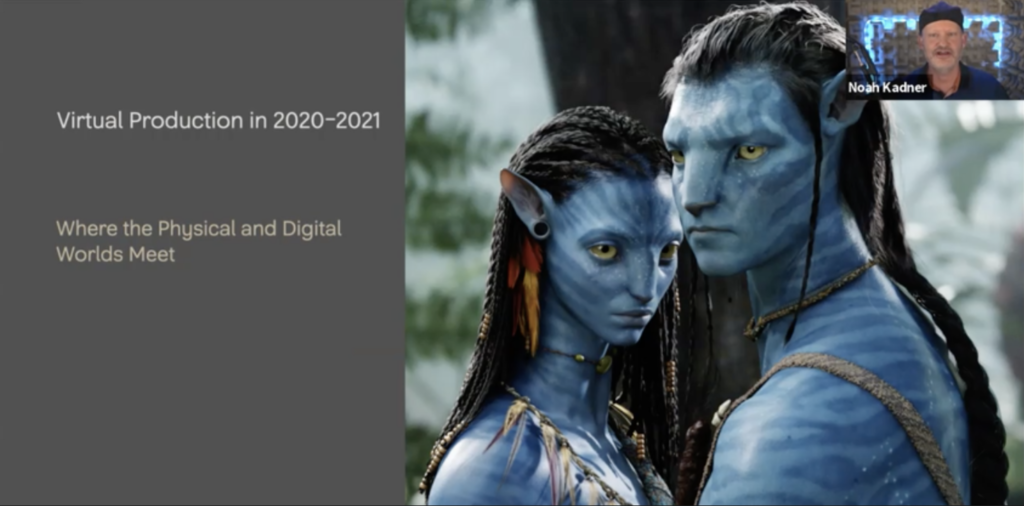Connections

HITS Keynoter: Virtual Production Here to Stay
Story Highlights
The past year-plus has informed many in Hollywood of the need and potential of virtual production techniques.
Noah Kadner could’ve told you all of that before the pandemic. He literally wrote the book on the subject.
His “Virtual Production Field Guide” was written for Epic Games in 2019, and just saw a follow-up volume released in April, following a year that proved how ahead of the virtual production game he actually was.
“This stuff is not only the future of where we can go with production, and should be on your radar if it’s not already, but it’s happening in ways in the present that many may not realize,” said Kadner, senior writer for Epic Games and Unreal Engine, and virtual production editor at “American Cinematographer.”
Speaking during a keynote presentation (“Writing the Playbook on Virtual Production”) May 12 at the annual Hollywood Innovation and Transformation Summit (HITS) Spring event, Kadner detailed the origins of virtual production, and how the evolution of virtual production workflows are becoming standard operating procedure for many streaming feature and episodic content currently in production.
“It’s where the physical and digital worlds meet,” Kadner said, pointing to the revolutionary capture techniques used for Avatar, and the lack of physical sets for so much of the Disney+ series “The Mandalorian.” The elimination of green screen has led to a new saying in the industry: “fix it in pre,” he added.
 “But that was already happening in 2019, and not what made this go to the next level,” Kadner said. “Out of nowhere, the pandemic created this massive requirement for things like remote collaboration, reduced travel, reduced crew footprint, and these [virtual stages] have addressed that in effective ways. It’s taken something that was already happening and punched it into the stratosphere.”
“But that was already happening in 2019, and not what made this go to the next level,” Kadner said. “Out of nowhere, the pandemic created this massive requirement for things like remote collaboration, reduced travel, reduced crew footprint, and these [virtual stages] have addressed that in effective ways. It’s taken something that was already happening and punched it into the stratosphere.”
Many of these advances are owed to the use of game engines, which out of the box are geared toward production of content without a physical environment, he said. And with people working from home instead of a studio bay, virtual production techniques are perfect, allowing for a more iterative, collaborative and non-linear filmmaking process.
“Nobody is in the same room, but they’re all looking at the same session [while they work],” he added.
What Kadner has found to be a wonderful surprise is that new physical tools are being invented to match the virtual, digital capabilities of these remote technologies. “Cameras have gotten a lot more super-powered over the past year, made even more effective, controlled remotely,” he said.
The proliferation of both the techniques and tools over the past year doesn’t mean physical sets and on-location shoots are a thing of the past. It merely means options now exist to create with less travel overhead and more collaboration, and at an increasingly cheaper cost to pull off, Kadner said.
“The genie probably isn’t going back into the bottle, it’s not a fad,” he said. “Some of these trains were leaving the station already.”
HITS Spring was presented by IBM Security with sponsorship by Genpact, Irdeto, Tata Consultancy Services, Convergent Risks, Equinix, MicroStrategy, Microsoft Azure, Richey May Technology Solutions, Tamr, Whip Media, Eluvio, 5th Kind, LucidLink, Salesforce, Signiant, Zendesk, EIDR, PacketFabric and the Trusted Partner Network.









